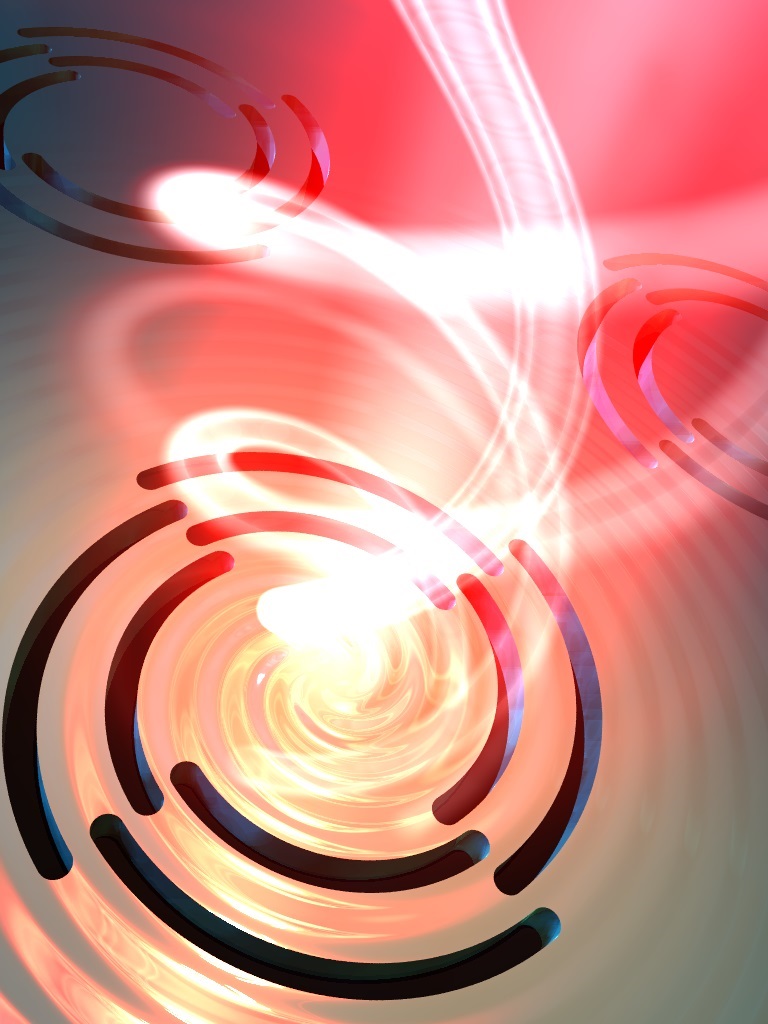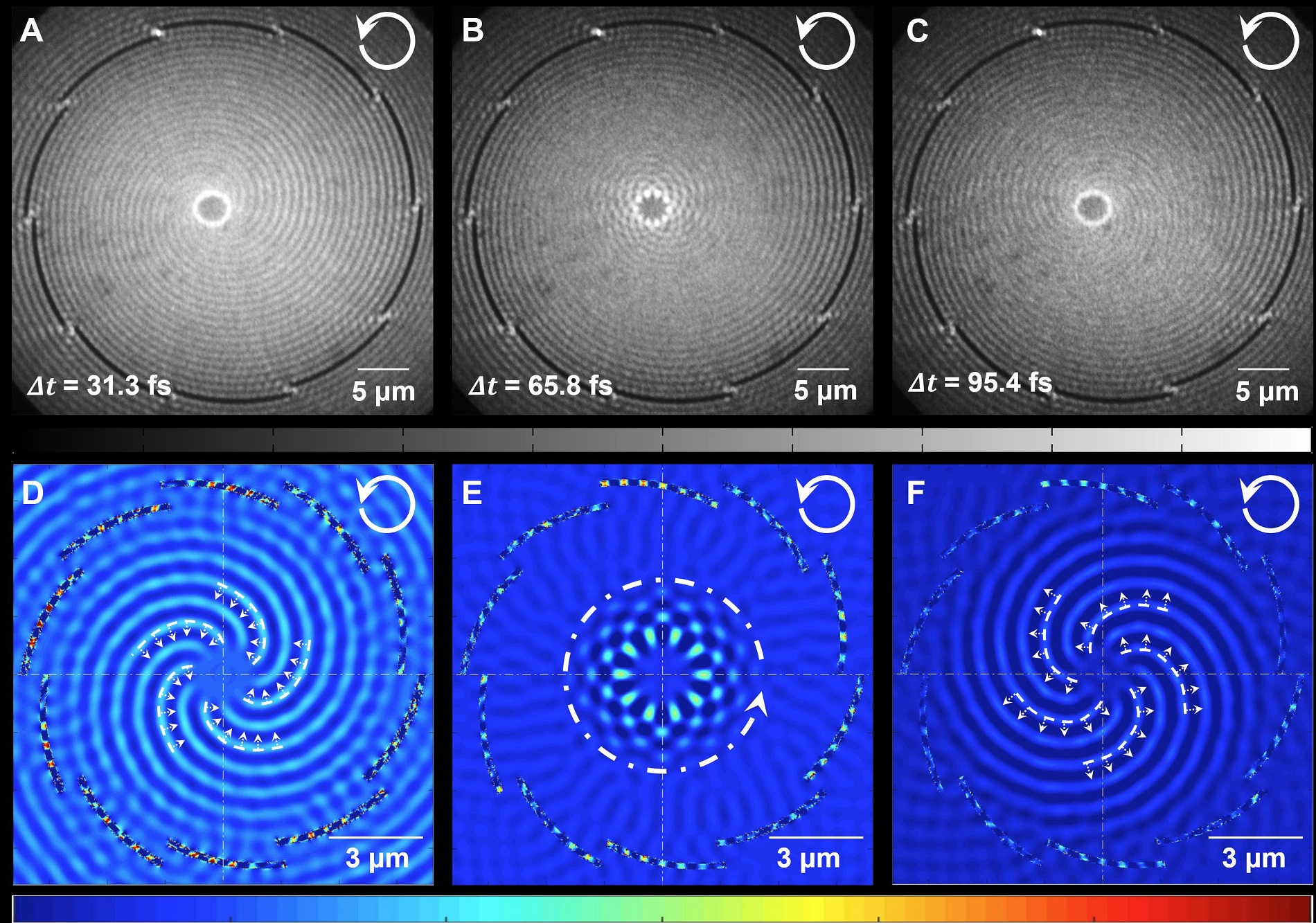April 30, 2017
The journal Science reports a breakthrough in light-matter interaction. The study, conducted by researchers at the Technion and their colleagues in Germany, is expected to lead to dramatic innovations in quantum computing, microscopic imaging and optical data storage.
Researchers at the Technion and their colleagues in Germany present a scientific-technological breakthrough in the field of light-matter interaction. The article published in Science presents the tracking of plasmonic vortices with unprecedented time and spatial resolution. The potential applications are many and varied: optical data storage, optical tweezers (gripping matter using light), quantum cryptography, quantum computing, microscopic imaging, thin sheets characterized by unique magnetic properties, and more.
The lead author of the article is Grisha Spektor, who is studying for his doctorate under the supervision of Prof. Meir Orenstein of the Viterbi Faculty of Electrical Engineering at the Technion. The article is coauthored by researchers from the German universities of Kaiserslautern, Duisburg-Essen and Stuttgart.
Plasmons are a type of surface waves resulting from the coupling between light and plasma of free electrons in metals. They are formed at the interface between a conducting material and an insulating material as a result of the impact of light on the material and are characterized by unique physical properties, including significant shortening the wavelength of the light. The ability to design nanoscale structures in metals enables the controlled formation of minute plasmonic vortices that carry angular orbital momentum (OAM) and are actually trapped on the surface.
The high rotation velocity of the plasmonic vortices challenges those who want to track them and study the mechanism of their formation. Hence the dramatic importance of this article in Science, which presents the first success in accurately tracking the development of plasmonic vortices with an unprecedented resolution of time and space.

A description of the formation of the plasma vortex
Historical-scientific background
Since the theoretical work of physicist John Henry Poynting in 1909, and the experiments conducted by Richard Beth in the mid-1930s, it has been known that light is characterized by an angular momentum reminiscent of the movement of a spinning top. Pictorially, the electron can be likened to a small ball spinning around itself at a given speed (spin) - like the earth or the moon, for example.
For nearly a century, the physical community has considered spin to be the only angular momentum of the photon. However, following the pioneering work of Les Allen published in 1992, it became clear that light could carry an additional angular momentum: orbital angular momentum (OAM). In this situation the light progresses like spiral stairs and the wavefronts rotate at a speed of hundreds of trillions of revolutions per second. In 2008, the members of Prof. Erez Hassman’s group, also from the Technion, were the first to show that plasmonic vortices could be excited on surfaces.
OAM is an attractive research object not only due to pure scientific interest but also due to its enormous applied potential: data encryption, increasing the capacity of fiber-optic communications systems, quantum encryption, and more. Finally, minimizing the angular momentum carried by light and binding it to plasmons has the potential to transfer high amounts of angular momentum to matter and to enable energy transfers that are now considered impossible.
In order to produce tiny optical devices that rely on OAM, ultra-small wavelengths are required, which are not possible in conventional optics. The use of OAM carried by plasmonic vortices overcomes this limitation because these oscillations can reach wavelengths that are much shorter than those of the original light. In other words, they enable the development of photonic devices with dimensions of less than 100 nanometers (one tenth of a micron).
The development of a technology that produces controlled plasmonic vortices is a difficult and complex challenge, and the current success stems from the Israeli-German cooperation and a combination of very high quality gold crystals, rapid laser flashes and an electron microscope.
The concept was conceived by Grisha Spektor of the Technion, the lead author of this article. Researcher Bettina Frank of the University of Stuttgart created ultrathin layers of gold and a sort of “thread” according to data calculated by Spektor.
Researchers from the two other German universities (Kaiserlautern and Duisburg-Essen) radiated ultra-short laser flashes on the gold - flashes of about 13 femtoseconds (a femtosecond is 10 -15 of a second). The impact of the gold light created plasmonic oscillations that the researchers tracked with an electron microscope and documented at a time resolution of a few hundredths of the optical cycle. The observations allow an in-depth understanding of the evolution of the vortices and the nature of their behavior for the first time. Finally, the researchers showed a dynamic of vortices confined to deep subwavelength dimensions on a scale of around 100 nanometers.
As noted, this is the first accurate observation of the formation of plasmonic vortices, and the documentation shows that these vortices resemble ripples that move from the outside and rise upward in the center. In this process a number of concentric lobes are formed, which revolve around the center. The number of lobes and their angular velocity have been measured here for the first time and are a direct measurement of the angular momentum carried by the vortex. The researchers found that the larger the OAM, the more time the vortex needs in order to complete a revolution. They estimate that the study now published may pave the way for minute OAM-based encryption systems and lead to new light-matter interactions.
The full article:
http://science.sciencemag.org/content/355/6330/1187.full
The accompanying videos appear in the Appendix:
http://science.sciencemag.org/content/suppl/2017/03/15/355.6330.1187.DC1
The third video (Movie S3) shows the development of the plasmonic vortex













